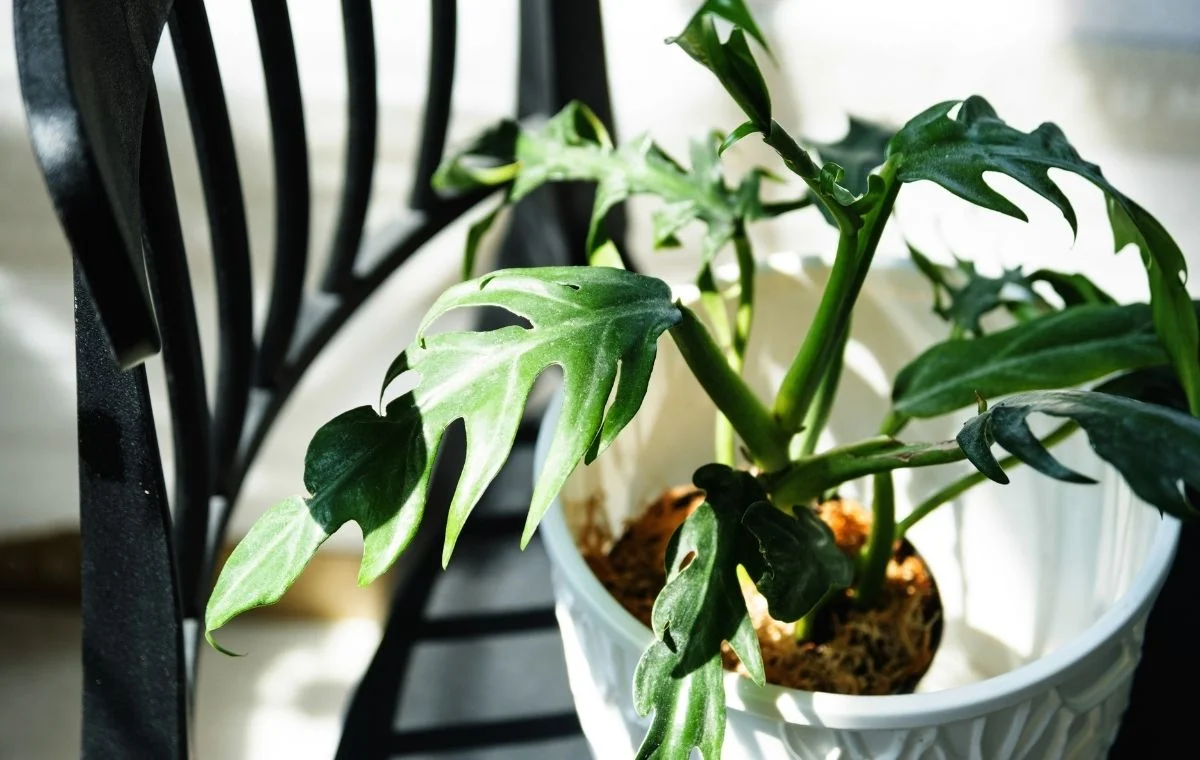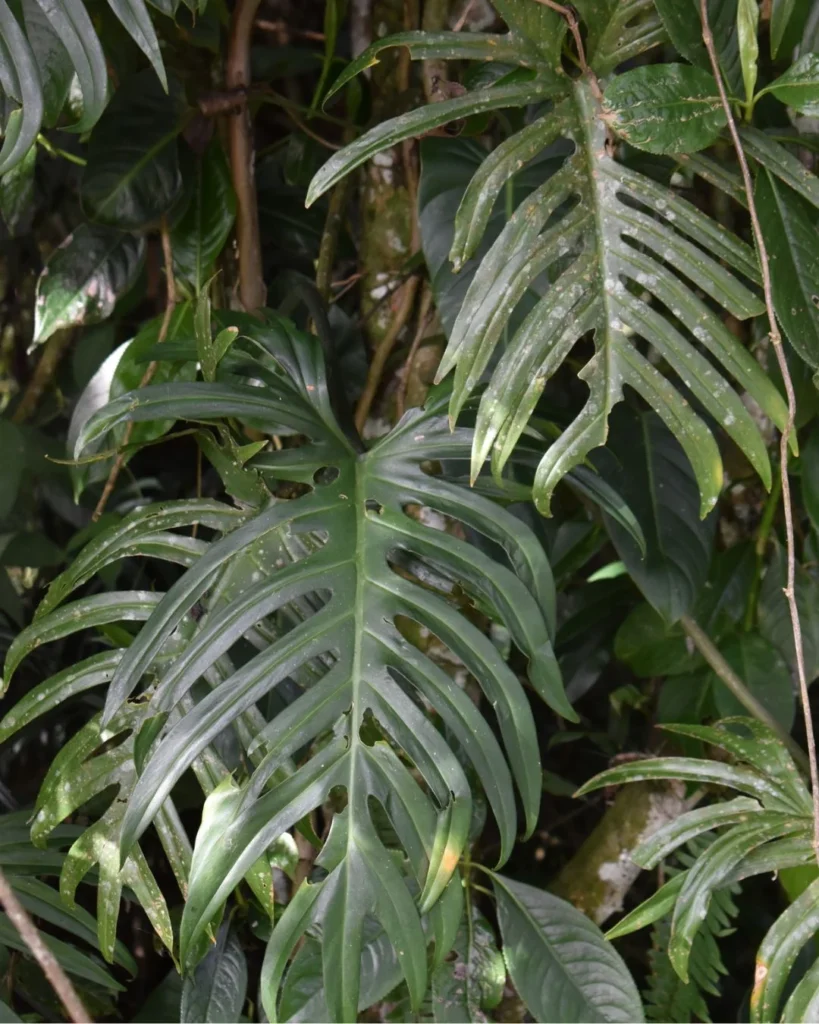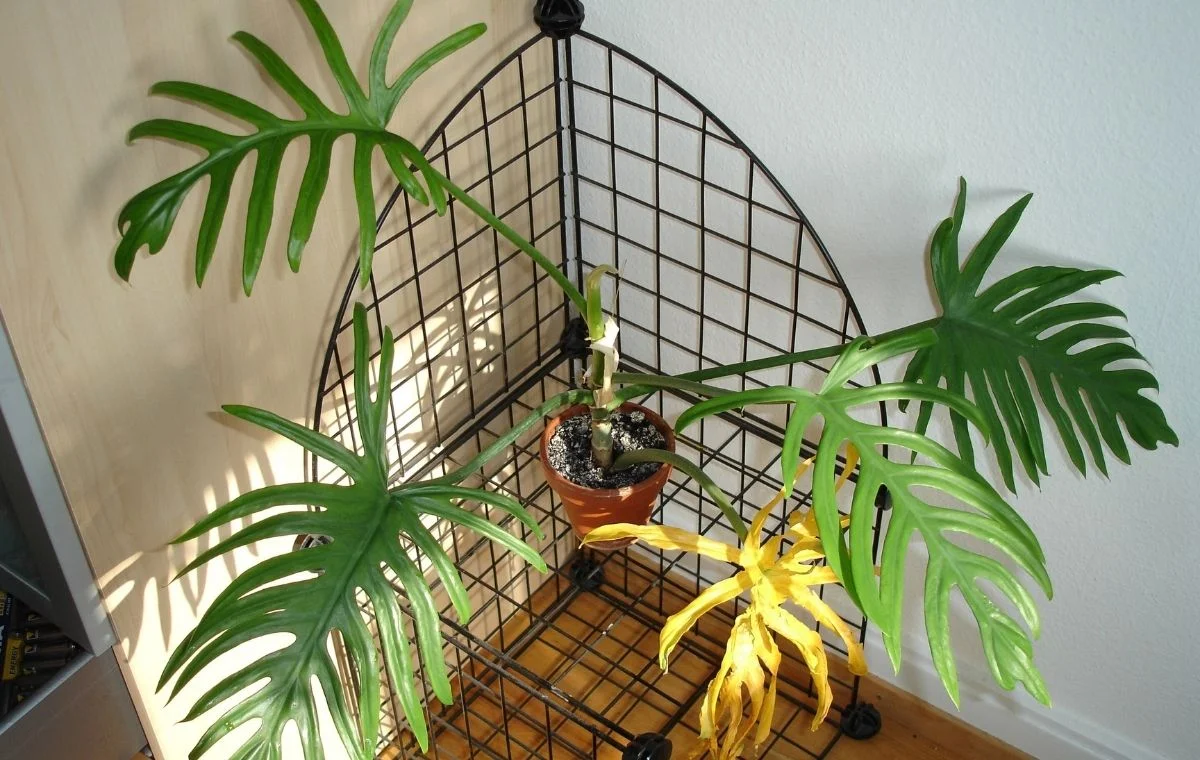
The Skeleton Key Philodendron is an herbaceous, epiphytic, rhizomatous, and perennial species, renowned for its stunning skeleton-shaped foliage. Native to the Amazon Rainforest, it is both an epiphyte and a climber, much like most philodendrons. It boasts a strong, ascending rhizome with aerial roots that aid in anchoring itself to tree trunks. Its leaves emerge from the rhizome, shielded by cataphylls, and are upheld by long terete (cylindrical) petioles, capable of reaching up to 60cm (approximately 23.6 inches) in diameter.
The leaves are subcoriaceous, deeply lobed, and divided into long, slender lobes, shining, pointed, and resembling palm fronds. The leaves display two shades of green, a darker hue at the edges and a lighter tone at the center, with the main veins in subtle relief. Notably, the plant’s initial leaves differ from the mature form, being smaller, less intricately divided, with shallower incisions and rounded lobes. Consequently, as the plant matures and ascends its support, its leaves gradually adopt the characteristic skeleton form.
The Skeleton Key Philodendron blooms at any time of the year, producing two inflorescences per axil. They take the form of a spadix, accompanied by a spathe in shades of green-pink, white, or reddish. Female flowers mature at a distinct time from male flowers, preventing self-pollination. Pollination is facilitated by beetles seeking refuge and sustenance in the inflorescence.
In comparison to its foliage, the inflorescence holds limited ornamental significance. Following pollination, it yields berry-type fruits, which serve as food for wildlife, subsequently aiding seed dispersal. Caution: it’s common to mistake Philodendron elegans for other well-known philodendron species such as P. radiatum, P. lancerum, and P. tortum due to their pinnate foliage.
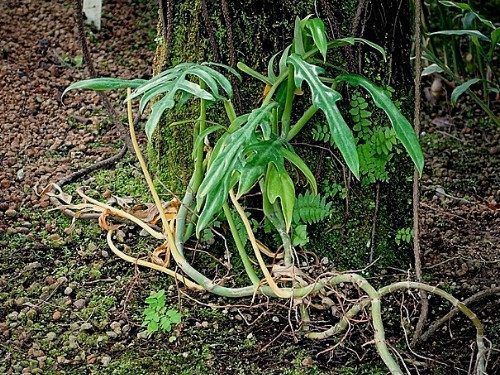
As the name suggests, this species exudes elegance and is suitable for both climbing and container planting. The Skeleton Key Philodendron can form a splendid green cover on tree trunks. Furthermore, cultivating it in pots indoors is an excellent option, especially near an east or west-facing sunny window.
Thus, it’s perfect for enhancing spaces and introducing biophilia to rooms, offices, balconies, clinics, and entry halls. It seamlessly aligns with the Urban Jungle trend, infusing a tropical atmosphere into the environment. It’s a slow-growing and easy-to-maintain plant, requiring minimal upkeep, involving dust removal from the leaves using a clean, damp cloth or a gentle shower.
It thrives in partial shade or filtered light and favors well-draining substrates rich in organic matter. For the substrate mix, consider fibrous blends designed for anthuriums or orchids, incorporating potting soil and vermiculite in balanced proportions. Direct sunlight exposure can lead to leaf yellowing and scorching. Watering should be spaced so that the substrate nearly dries out between waterings, avoiding excessive dampness that could result in root and rhizome rot.
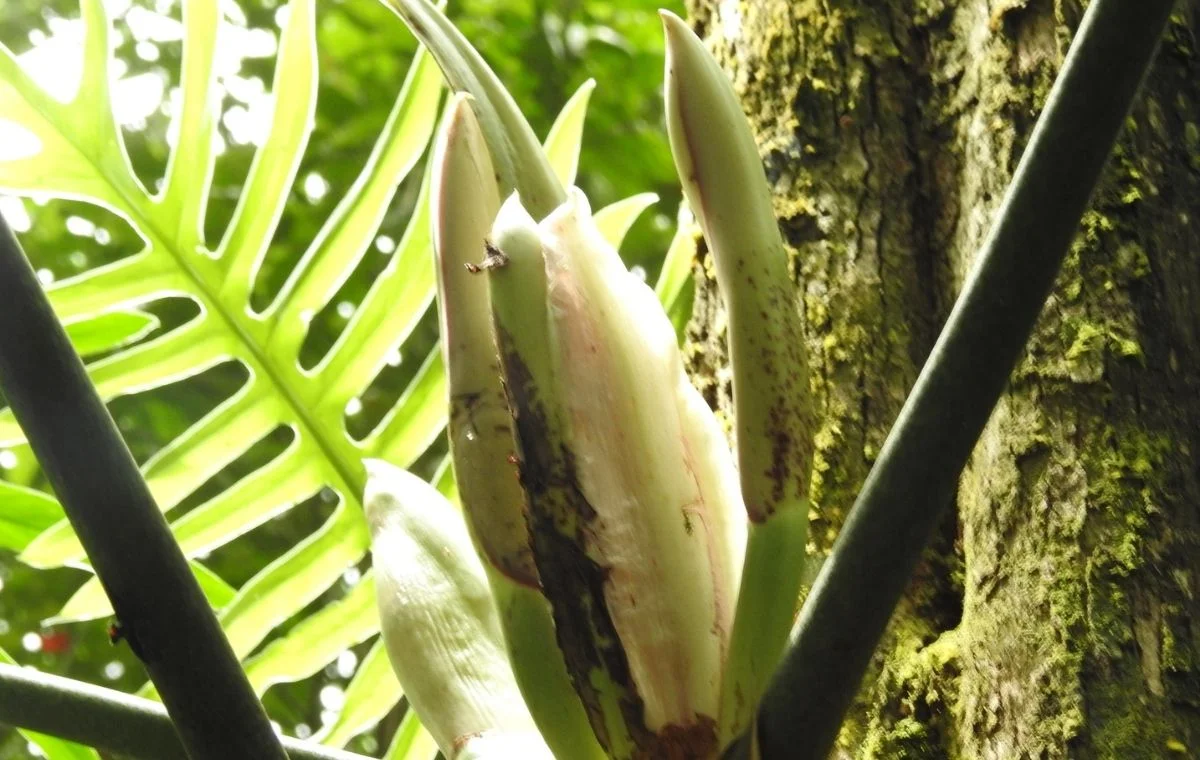
A common trait among various philodendrons, including the Skeleton Key Philodendron, is the evolution of leaves with respect to their climbing habit. When grown without support, their branches tend to sprawl, causing their leaves to gradually revert to their juvenile form. However, with proper support, as the plant ascends, it produces progressively larger and more intricately divided or perforated leaves, depending on the species.
It appreciates high air humidity, ranging from 60 to 80% throughout the year. Employ water-filled trays or an electric humidifier to supplement humidity levels. It’s intolerant of frost and thrives in temperatures above 15ºC (59ºF). During (re)potting, ensure that the rhizome remains atop the substrate, never buried, enabling natural rooting.
Fertilization should occur during the growing season—spring and summer—moderately, using slow-release fertilizers, adhering to manufacturer instructions, and considering the plant’s response to fertilization. Propagation of the Skeleton Key Philodendron can be achieved through cuttings, air layering, or seeding. Cuttings should be taken in spring and rooted in substrate or even water.
